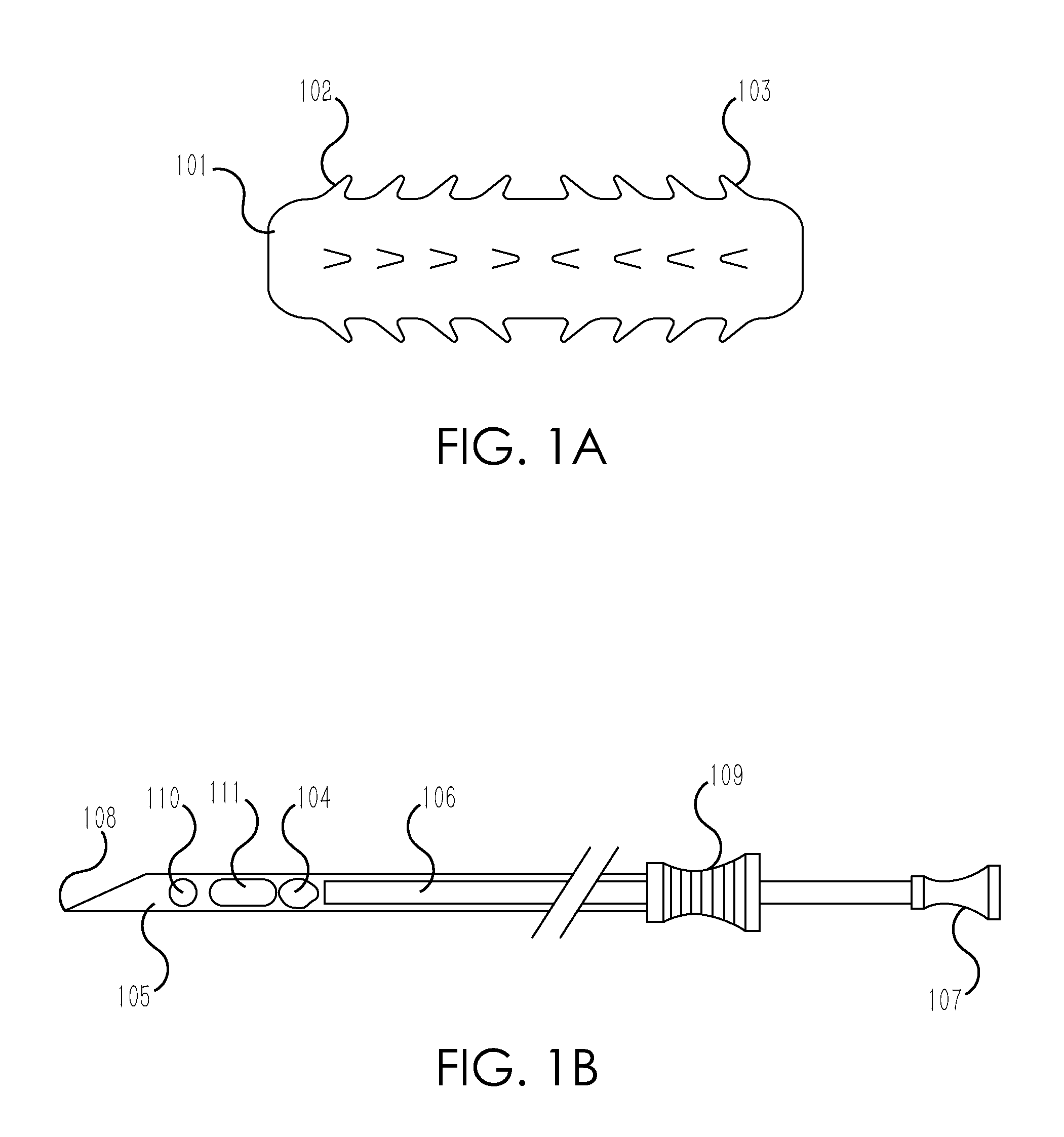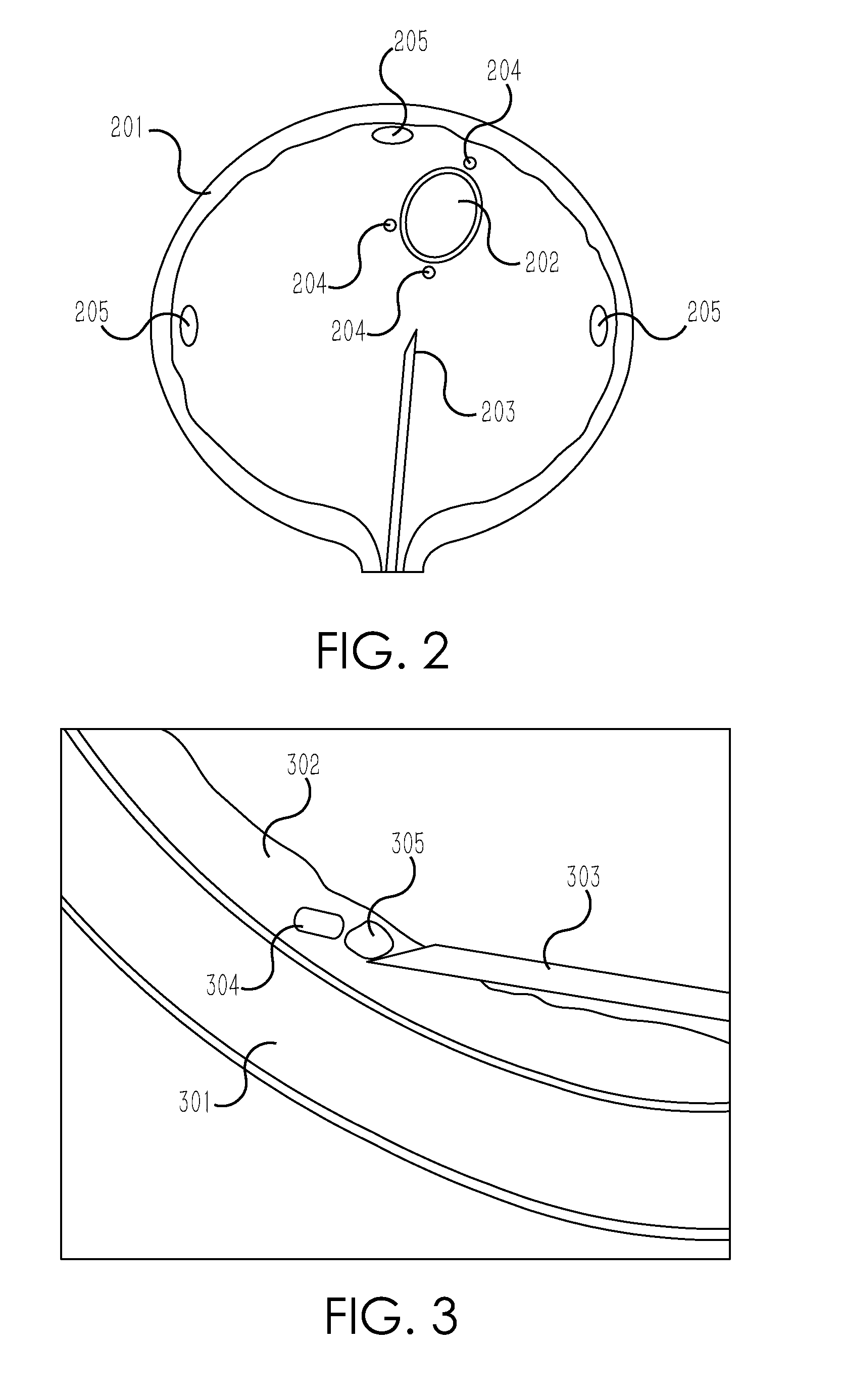Fiduciary markers and methods of placement
a fiduciary marker and marker technology, applied in the field of radiopaque fiduciary markers, can solve the problems of difficult to identically position a patient difficult to accurately target radiation, and difficult to achieve uniform positioning of patients from session to session, etc., to achieve the effect of improving the probability of retention
- Summary
- Abstract
- Description
- Claims
- Application Information
AI Technical Summary
Benefits of technology
Problems solved by technology
Method used
Image
Examples
example 1
Construction of Fiduciary Markers with Anchoring Moieties and Delivery Needle
[0089]The starting material for the fiduciary markers was 24 karat gold wire (W.E. Mowrey Company). Large markers (with a body size of approximately 3.2 mm long by 1.1 mm wide) were constructed by cutting 3.2 mm lengths of 17 AWG wire. Small markers (with a body size of approximately 2.1 mm long by 0.65 mm wide) were constructed by cutting 2.1 mm lengths of 22 AWG wire.
[0090]On each marker, four parallel rows of anchoring moieties were made along the long axis of the body, each row spaced at 90 degree intervals circumferentially around the circular body of the marker.
[0091]Anchoring moieties were made by cutting a short distance into the body of the marker with a sharp surgical scalpel at an angle of 30-45 degrees. After cutting into the wire, a slight rotation of the scalpel towards the perpendicular caused the flaps to flare out away from the body of the wire. The resulting flaps of lifted material resemb...
example 2
Use of Fiduciary Markers with Anchoring Moieties to Delineate Tumor Resection Beds
[0096]Between January 2007 and March 2011, the gold fiduciary markers described in Example 1 were tested in a total of 10 patients. Each patient had been diagnosed with a single bladder tumor (focal, T2, NX, M0 transitional cell bladder cancer) and had undergone a primary endoscopic resection of a single tumor from the bladder wall. The patient pool consisted of seven men and three women, mean age 77.4 and 74.7 years, respectively.
[0097]Fiduciary markers were implanted at the time of bladder tumor repeat resection / fulguration. Using the coaxial delivery needle described in Example 1, conjoined to a standard cystoscope, 3-5 markers were implanted in each patient in a roughly circular pattern outlining the tumor resection bed, for a total of thirty-nine markers placed. Markers were placed in a staggered orientation, such that all markers were visible from both anterior-posterior and lateral radiographic ...
example 3
Delineation of the Whole Bladder Using Fiduciary Markers
[0106]In this Example, the use of the fiduciary markers to delineate the boundaries of the whole bladder is demonstrated. This study was conducted in a male subject having been diagnosed with a 2-3 cm muscle invasive bladder tumor located at the dome of the bladder. The tumor was removed by transurethral resection.
[0107]Three and a half months later, fiduciary markers were implanted in the patient to delineate the tumor resection bed, using the same general method as described in Example 2. The markers had body dimensions of 2.6 mm long by 0.7 mm wide, having four rows of anchoring moieties, made and configured as described in Example 1. Markers were co-injected with following Gelfoam™ plugs, as described in Example 1.
[0108]Four sites were marked with fiduciary markers. A single marker was placed at the right lateral limit of tumor area. A single marker was placed at the left lateral limit of tumor area. A single marker was pla...
PUM
 Login to View More
Login to View More Abstract
Description
Claims
Application Information
 Login to View More
Login to View More - R&D
- Intellectual Property
- Life Sciences
- Materials
- Tech Scout
- Unparalleled Data Quality
- Higher Quality Content
- 60% Fewer Hallucinations
Browse by: Latest US Patents, China's latest patents, Technical Efficacy Thesaurus, Application Domain, Technology Topic, Popular Technical Reports.
© 2025 PatSnap. All rights reserved.Legal|Privacy policy|Modern Slavery Act Transparency Statement|Sitemap|About US| Contact US: help@patsnap.com



